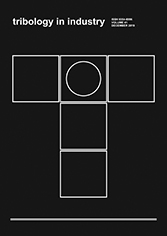Volume 45, No 1, 2023, Pages 89-101
Minimizing Tool Wear, Cutting Temperature and Surface Roughness in the Intermittent Turning of AISI D3 Steel Using the DF and GRA Method
Authors:
Fethi Khelfaoui ![]() ,
Mohammed Athmane Yallese
,
Mohammed Athmane Yallese ![]() ,
,
Septi Boucherit ![]()
![]() ,
Hanane Boumaaza
,
Hanane Boumaaza ![]() ,
,
Nourdine Ouelaa ![]()
DOI: 10.24874/ti.1395.10.22.01
Received: 30 October 2022
Revised: 21 November 2022
Accepted: 3 January 2023
Published: 15 March 2023
Abstract:
Intermittent turning (IT) is characterized by a different context than continuous turning (CT). The cutting tool is shocked each time it goes off-load and engages a new surface. This interruption causes severe cutting conditions, which fatally affect the performance parameters. The purpose of this study is to assess the effects of four cutting factors, tool nose radius (r), cutting speed (Vc), feed rate (f), and depth of cut (ap), on the following output performance parameters: surface roughness (Ra), cutting temperature (T°), and cutting tool wear (VB) during turning (IT) AISI D3 cold work tool steel. A triple CVD (AI2O3/TiC/TiCN)-coated carbide cutting tool was used. A Taguchi L9 (3^4) experimental design was adopted for carrying out the experiments in intermittent turning. To improve the performance parameters based on three (3) highly particular scenarios that fulfill industrial criteria, the desirability function (DF) and the grey relational analysis method (GRA) were used. Finally, the optimization findings of the two strategies were compared in order to evaluate the performance of each method.
Keywords:
Intermittent turning, AISI D3, RSM, Modeling, GRA





